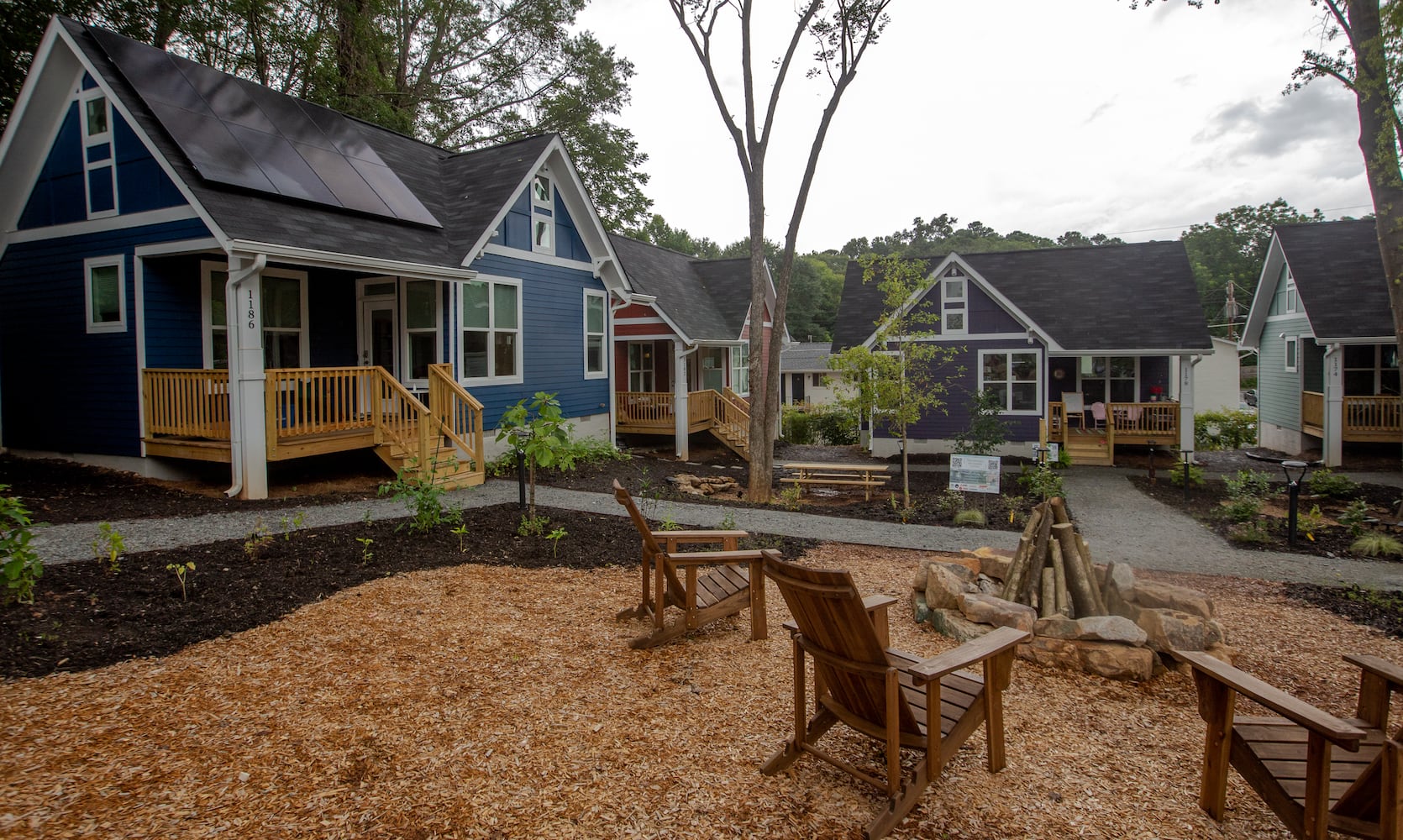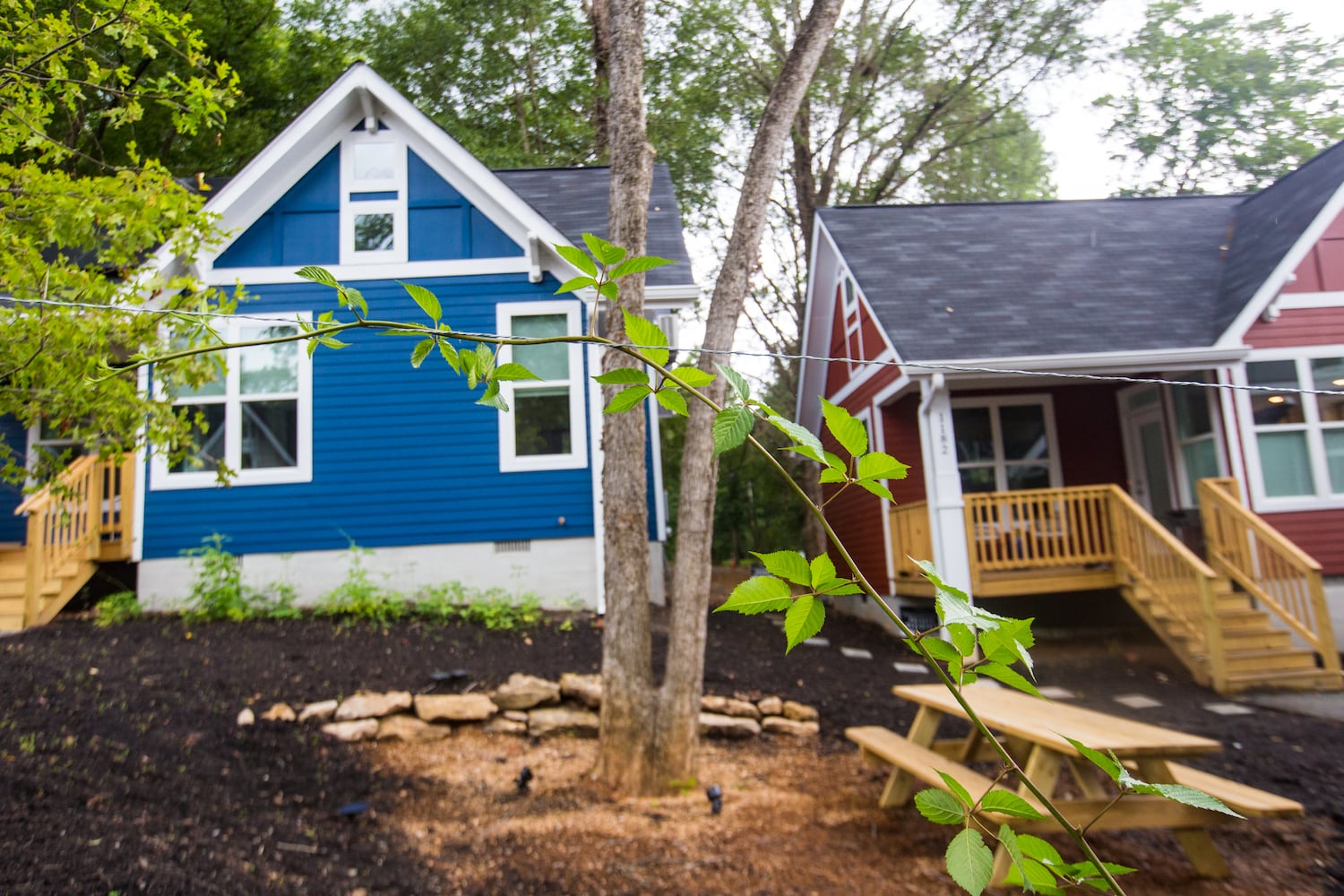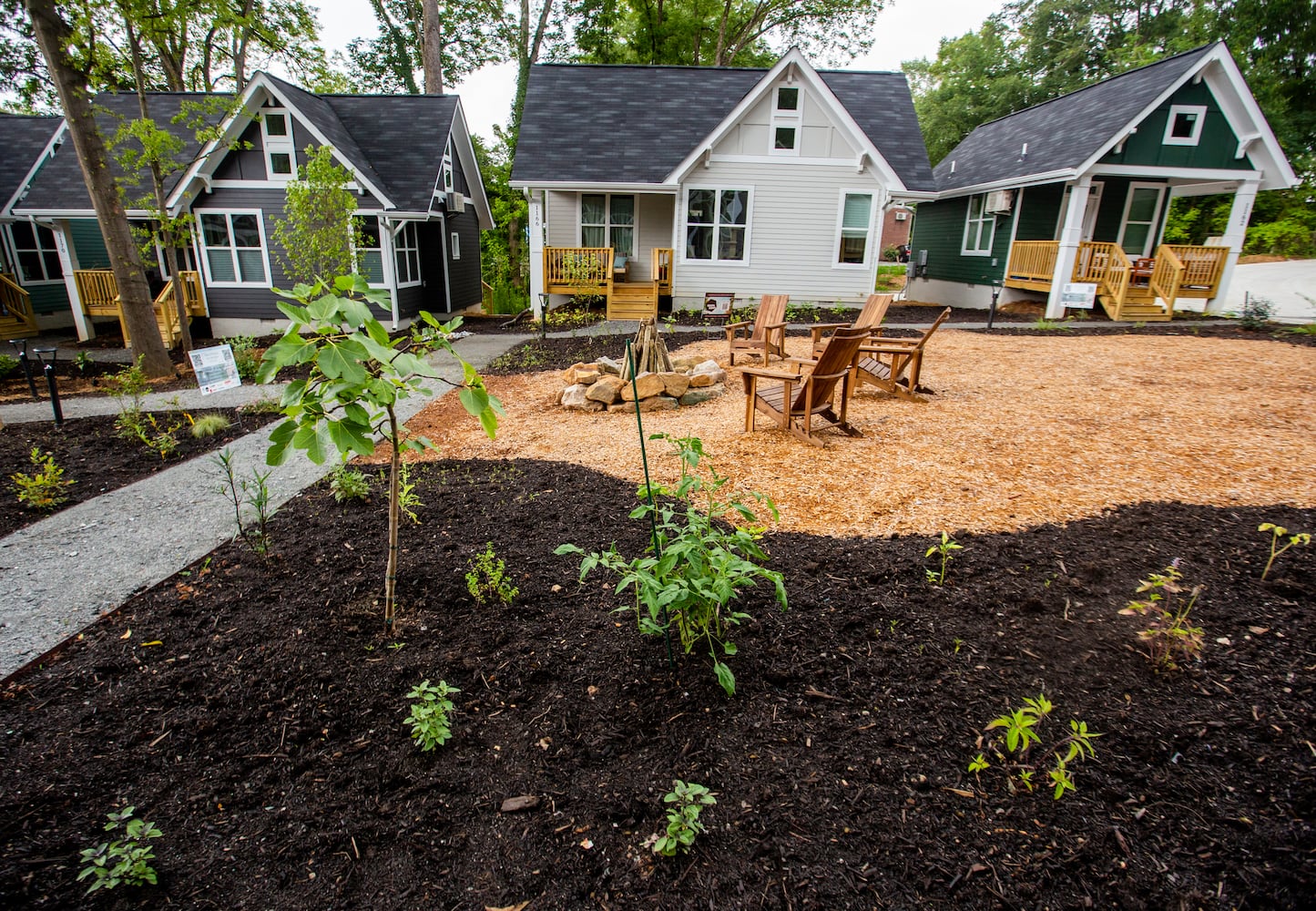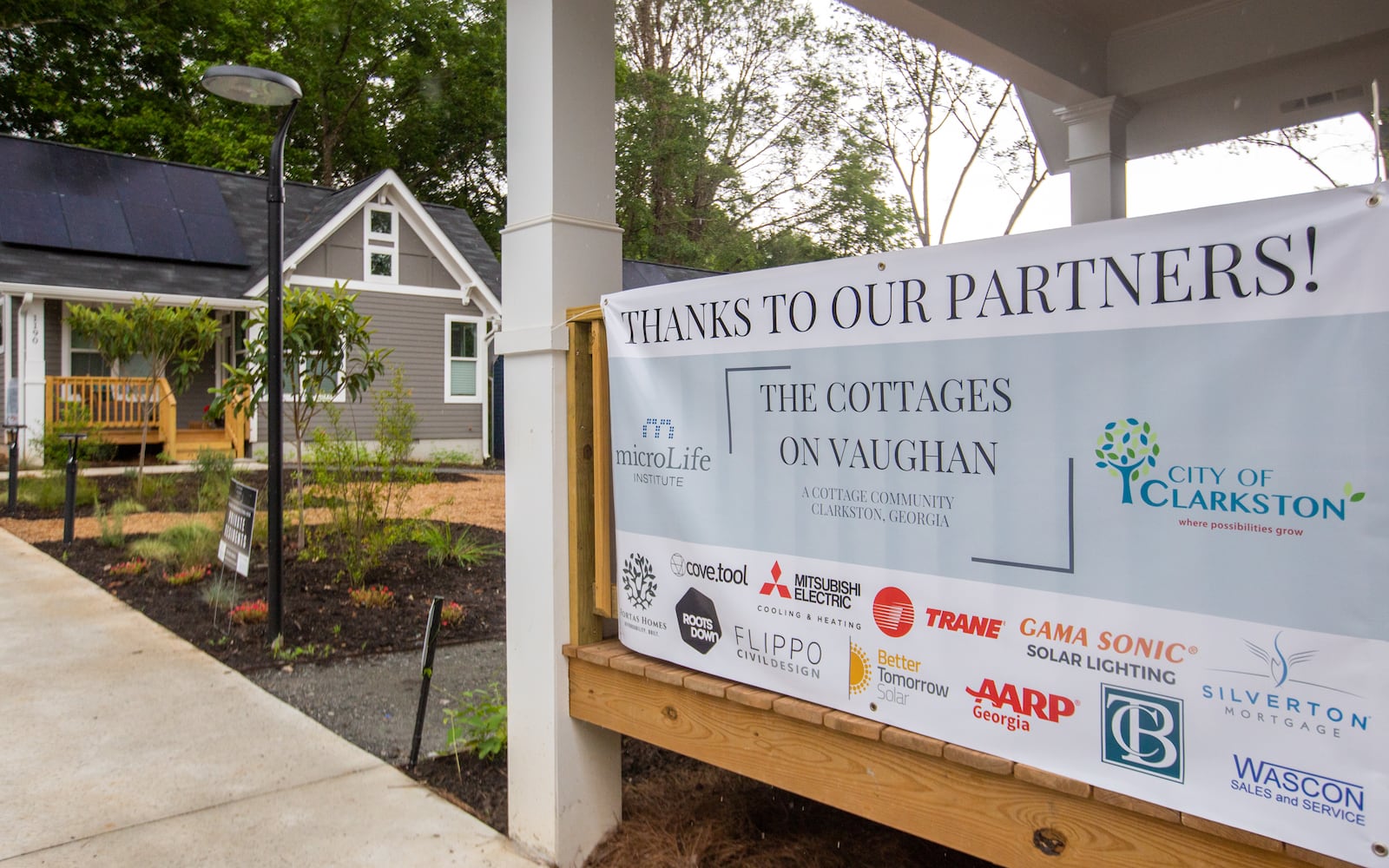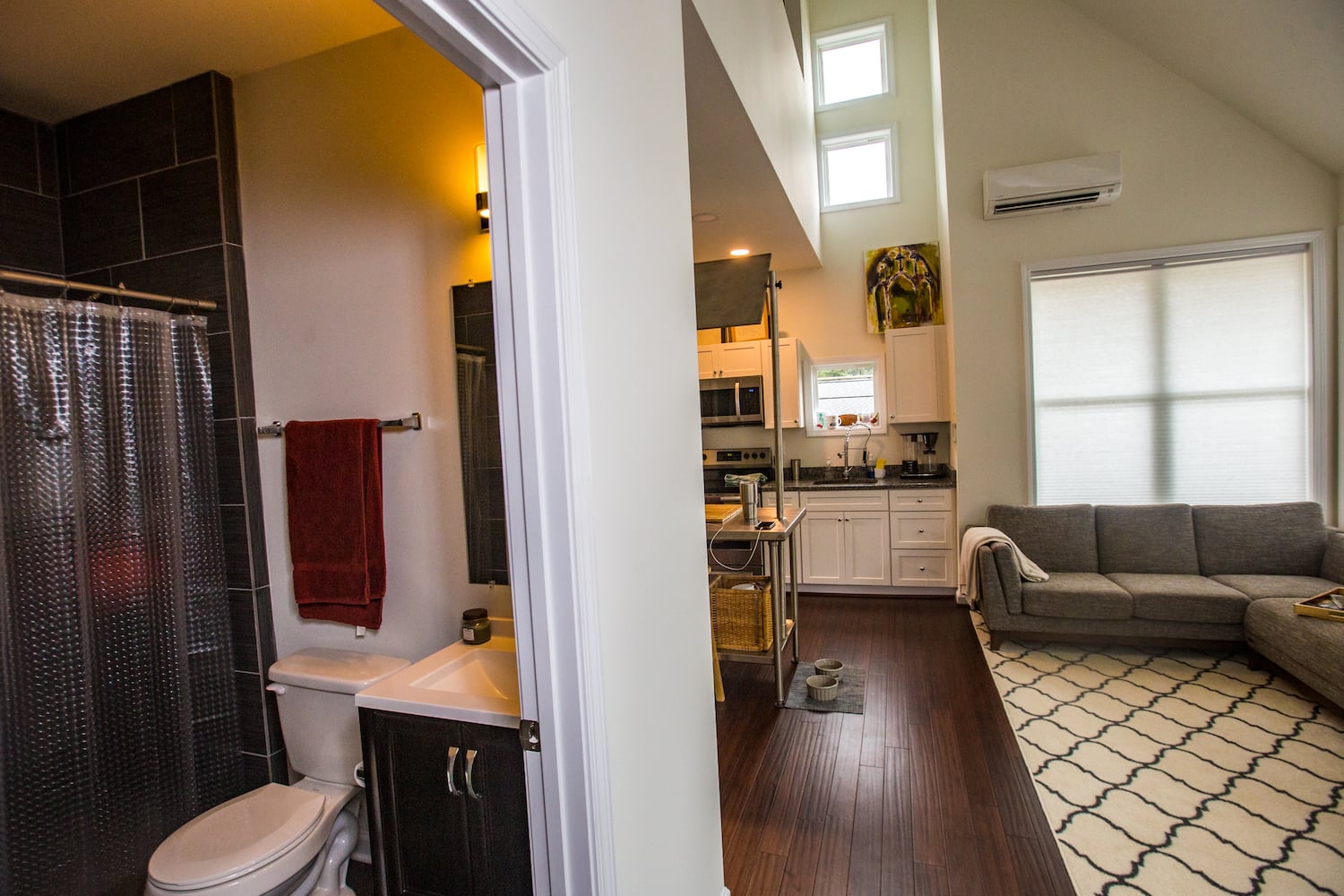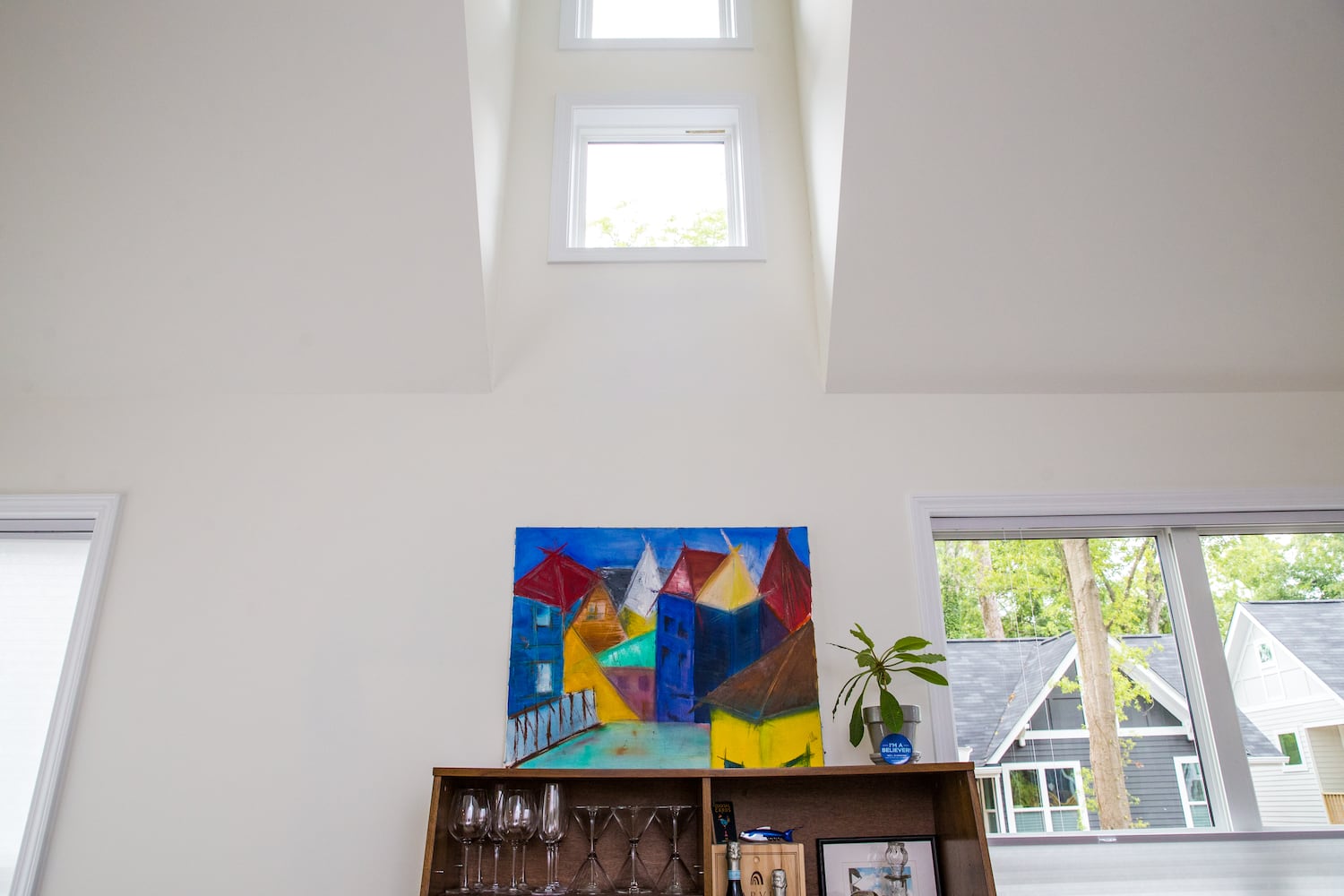The Cottages on Vaughan in Clarkston — Georgia’s first tiny home community — has been recognized for its community-oriented pocket neighborhood development.
On Tuesday, the Urban Land Institute’s (ULI) Terwilliger Center for Housing named MicroLife Institute, Inc. as the winner of this year’s Jack Kemp Excellence in Affordable and Workforce Housing Award, according to a news release. MicroLife developed the Cottages in a joint effort with the city of Clarkston.
The Cottages on Vaughan consists of eight standalone homes that are 250 to 550 square foot in size. Spanning a half-acre in total, the “micro-pocket” neighborhood a few blocks from Clarkston’s downtown features eight homes that were sold for between $119,000 and $201,000 last year.
The Kemp Award was established in 2008 in memory of Jack Kemp, a former secretary of the U.S. Department of Housing and Urban Development and a national advisory board member of the Terwilliger Center. It recognizes developments that use innovative financing sources to provide attainable mixed-income housing, primarily focusing on households earning greater than 60% of area median income ($57,840 for a family of four).
“The MicroLife Institute is excited to present better housing conversations by winning this award, and further show that we can have quality of life in a smaller footprint,” Will Johnston, MicroLife’s executive director, said in a statement. “One project is inspiring thousands across the country as we need to look at our housing policy and allow for better housing choice within our communities. We are so honored to receive this recognition, and we’re thrilled to see where the housing conversation goes from here.”
DeKalb County Commissioner Ted Terry, who was Clarkton’s mayor when the Cottages were being developed, said in a statement that he is immensely proud of MicroLife for working on the Cottages. Terry worked with MicroLife to update city zoning laws to allow for their construction.
“The Cottages on Vaughan demonstrate that with sound housing policy, we can create vital missing middle housing and we can do it in a sustainable way, strategically placed near transit, job centers, schools and other public amenities, while still honoring the character of the neighborhoods,” Terry said.
AJC staff writer Zachary Hansen contributed to this report.
About the Author
The Latest
Featured
